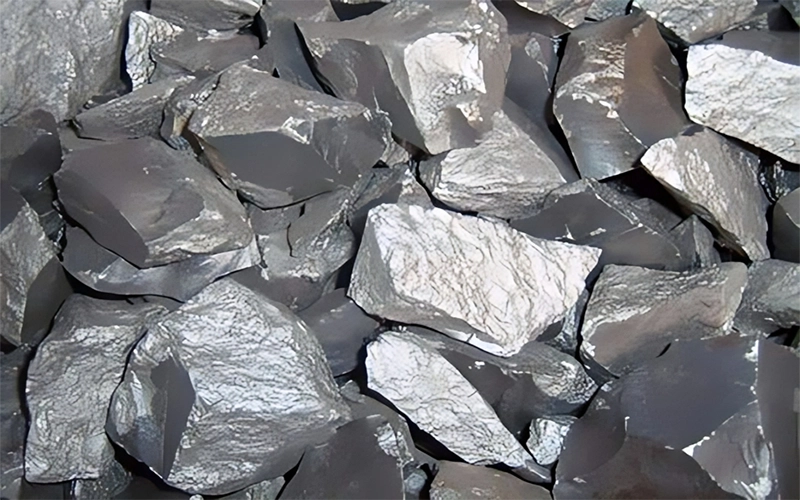Ferrochrome, often abbreviated as FeCr, is an essential alloy composed primarily of iron and chromium. It typically contains between 50% to 70% chromium by weight and is mainly used in the production of stainless steel. The alloy imparts corrosion resistance, hardness, and durability to steel, making it a crucial material in various industrial applications.
Ferrochrome is primarily produced through the carbothermic reduction of chromite ore (FeCr₂O₄) in electric arc furnaces. This process involves combining chromite with coke and fluxing agents, then melting the mixture at high temperatures (around 1,800°C). Depending on the carbon content, ferrochrome is classified into various grades: high-carbon (HCFeCr), medium-carbon (MCFeCr), and low-carbon (LCFeCr). High-carbon ferrochrome is the most widely used form in stainless steel production.
The largest consumer of ferrochrome is the stainless steel industry, which uses the alloy to enhance the corrosion resistance and mechanical properties of steel. Approximately 70% to 80% of the world’s ferrochrome output goes into stainless steel manufacturing. Ferrochrome is also used in superalloys, tool steels, and other specialty steels that require high wear resistance and strength.
South Africa, Kazakhstan, India, and China are the leading producers of ferrochrome. South Africa alone accounts for more than 50% of global ferrochrome production due to its vast chromite reserves. The market for ferrochrome is closely tied to the global demand for stainless steel, with price fluctuations often reflecting shifts in steel production and industrial activity.

Ferrochrome production is energy-intensive and has significant environmental implications. The smelting process releases carbon dioxide, particulate matter, and other pollutants. Water and soil contamination from slag and other waste products is another concern. As a result, many producers are investing in cleaner technologies and energy-efficient furnaces to reduce the environmental footprint.
Ferrochrome plays a pivotal role in modern metallurgy, particularly in the stainless steel industry. Its unique combination of iron and chromium makes it indispensable for producing materials that are durable, corrosion-resistant, and suitable for a wide range of applications. As industries continue to grow, particularly in infrastructure and automotive sectors, the demand for ferrochrome is expected to remain strong, prompting ongoing innovations in its production and sustainability practices.
The electric arc melting of chromite produces ferrochrome, an iron magnesium chromium oxide and the most important chromium ore. Most of the world’s ferrochrome is produced in South Africa, Kazakhstan and India, which have large domestic chromite resources, and is utilised in the production of stainless steel.

| Element | C | Si | S | P | Cr | Mn | N | Size |
|---|---|---|---|---|---|---|---|---|
| Percent | 4-8 | 3 | 0.05 | 0.02 | 63 | 0.5 | 0.05 | 10–50 mm |
| Element | C | Si | S | P | Cr | Size |
|---|---|---|---|---|---|---|
| Percent | 0.1 | 1 max | 0.02 | 0.2 max | 68 min | 10–60 mm |
| Element | Size | S | P | Si | C | N | Cr |
|---|---|---|---|---|---|---|---|
| Value | 10–50 mm | 0.03 | 0.03 | 0.2 | 0.04 | 6–8 | 65–72 |

© 2013 Vertix Co. All Rights Reserved. Leading Supplier Of Foundry & Metallurgical Materials